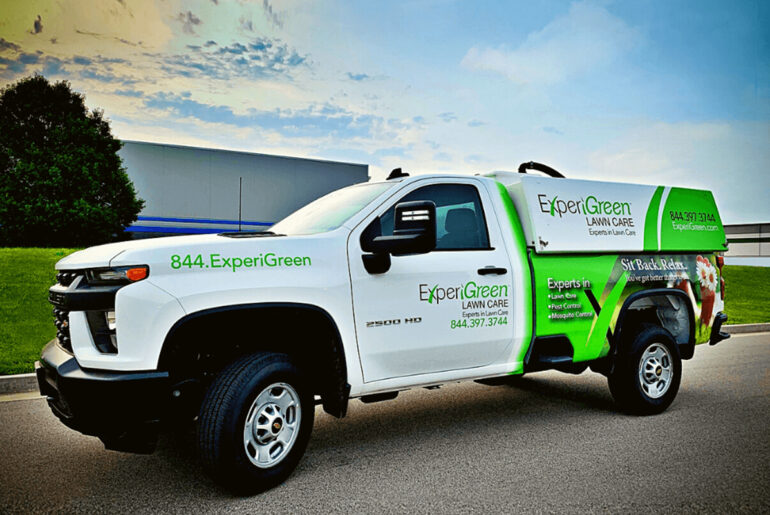Social media is a cornerstone of communication in modern society and a powerful tool for a home service business. It is no longer used solely for sharing business status updates, promotions, and connecting with friends. Today, social media is connecting global and local communities and enabling home service business owners to grow their businesses and their communities to become more profitable.
To harness that power in 2024, there must be a well-planned strategy that balances brand building, relationships and engagement, and performance marketing. Businesses that excel at social marketing today understand this balance and know that it is about providing value over promotion, understanding where social media fits in attribution models, and viewing their community as an invaluable tool rather than an afterthought.
Brand Building and Providing Value
Organic social media marketing and social advertising are no longer two separate disciplines. A brand’s presence on social media should be strategically tailored so all content and promotional efforts work together as a single unit to grow a business. While important, acquiring new leads is not the only aspect of growing a business; many factors contribute to success.
Growing a business can mean many things to different companies, but oftentimes it involves increasing brand awareness and providing value to customers. It is easy to become narrow-sighted and fixated on lead generation, but all businesses that have had success with social media marketing know that lead generation starts with having a strong brand. When it comes to building a brand, social media should be a weapon of choice.
Brand building is not new on social media, but it is different than it used to be. Social media is LOUD, and business owners are consistently trying to break through the noise to get a sliver of users’ attention. Users still want to find content that is valuable to them, but they need it to appear on their newsfeeds and they have to notice it to know that it exists.
It is important to remember that social media is NOT search engine marketing; people are not looking for home services when they are on social media. Instead, home service businesses must seek users out. It all starts with content, as a social media account is nothing without good content. After all, a user is not likely to care about promotions if they have no idea who you are. So introduce yourself, over and over again, with content that a homeowner is going to find value in.
For example, take a lawn and landscape business that’s offering a fall deal for homeowners who need to grade and seed their lawns. They decide to run an ad for a promotion featuring a discount for new customers. While some homeowners know that they need new grass and the works, they might figure that spring is the best time to do it because grass dies in the winter—a logical thought.
This business has the opportunity to first educate these potential customers with content, such as a blog or video explaining why the fall is the best time for planting grass, delivered right to their news feeds. This content is not asking anything from the user, simply informing them. Later, this company can strategically hit the users who read or watched their content with a retargeting ad for that same fall promo. In the first scenario, the user is likely to just scroll past because spring is six months away and out of mind, or they might not even notice the ad at all. In the second scenario, the user, who is now informed about the benefits of seeding a lawn in the fall and has its top of mind to get done before the frost comes, sees the promo and ideally calls to schedule an appointment.
This is a very simplified example of combining traditional, top-funnel organic content marketing with lead-generating efforts. Facebook’s Business Manager delivers sophisticated audience targeting options from their large and diverse user base. With a small investment, you can take the content that you create for organic purposes and put it directly in front of your target audience, providing them the opportunity to engage with your business before they know you.
These users may not be looking for your specific service at the time, but they will know who you are and what you do. Better yet, if you make them laugh or teach them something, they will remember you when they do need your service—or when you strategically hit them with a retargeting ad to remind them.
Moving through 2024, make sure you are thinking about the full funnel and not siloing organic social vs. paid social when creating your social strategy. If you do not have an organic or a social advertising strategy yet, check out my previous blogs on Planning a Social Media Content and Engagement Strategy For Your Field Service Business and How to Kickstart a Successful Facebook and Instagram Advertising Strategy For Your Local Service Business.
Omnichannel Marketing and Attribution
Attribution is a hot topic, especially for social media marketing. This is mainly because a lot of what happens on social media is difficult to tie to a hard sale. The customer journey is far from linear. Customers may engage with you on social media every day, then search your business on Google, receive an email, and read your blog before deciding to call in and schedule an appointment. In this common scenario, not one of your digital marketing efforts is clearly tied to scheduling that service. Similarly, a customer may read everything you put on social media but not once engage (comment, like, share), then visit your website directly and request a service.
In this case, your webpage is the only thing that will be credited for bringing in that customer, even though the bulk of their journey took place quietly on social media. You may never tie all your hard-earned content efforts to that scale, especially with recent privacy laws, such as the General Data Protection Regulation (GDPR), in effect. How, then, are you supposed to attribute those sales and leads?
There are tools that digital marketers can use to address this issue, as well as various attribution models. Today, data comes cheap. The real value is in knowing what that data is saying. Once you can understand what the data is saying, you can start to understand your customer’s digital journey. Last touch attribution, which is what was described earlier with the website lead, is extremely misleading and only shows the end of that story.
To truly understand how customers are finding out about your business, all of your digital marketing efforts must be aligned and each touchpoint must be accounted for. These efforts should be thought of as one machine with many levers, not separate factories. This is what omnichannel marketing is.
For example, if a customer sees a social post on Facebook and clicks through to read a blog, later gets retargeted with a display ad, does a Google search, clicks on a paid search ad, cruises the website, requests a quote, and receives an email or a phone call, each of those touchpoints needs to be accounted for in the attribution of that sale.
The mindset that the email drove the sale, or that the retargeting ad drove it, or that the social post was the ultimate reason the customer followed through, needs to be thrown away—each touchpoint contributed to that sale. Recognizing that the tricky part comes when you need to strategically figure out what you are going to say at each touchpoint to push potential customers to the next level of the journey. This comes in understanding attribution models.
How do you figure this out? For starters, Facebook has a great attribution tool that any business page can use for free. This tool allows you to see at which stage the customer views or engages with an ad before they become a lead. First-touch and last-touch attribution are fairly self-explanatory. First touch attribution credits the first touchpoint a lead saw, while last touch attribution credits the last.
However, many attribution models dive deeper and provide a more nuanced view by weighing the influence that each touchpoint has in the journey. Facebook states that 45% of digital touchpoints are missed by traditional measurement tools and attribution tools that rely solely on cookies and last-click attribution are not giving you a complete picture of what parts of your advertising drive business outcomes.
The conclusion is simple: if you do not understand attribution modeling, omnichannel marketing, and where social fits into the mix, you will not be successful at social marketing in 2024 and beyond. Learn how to use Facebook’s attribution tool here.
Community as a Tool to Grow Your Business
Social media, at its core, is made for fostering community, giving businesses the power to engage directly with their audience, and building relationships with clients, potential clients, and other professionals. It also allows you to humanize your brand, which is important as a community is an inherent need for humans.
It might not always make sense for your business to create a community of its own, such as a Facebook group, because it does take a lot of time and effort to nurture. But that does not mean that you cannot still be part of a larger community that will benefit your business. This isn’t limited to potential clients; there is an advantage in being part of a community of similar professionals as well. Especially today, COVID-19 has changed the way we connect. Digital networking is very common and relationships, trust, and referrals are all the products of networking.
Leveraging your local community and happy clients on social media can provide tremendous benefits to your business. Word of mouth has always been one of the most effective ways to grow any business. In fact, according to WorkWave’s 2021 pest control industry survey, when asked how most customers find out about their business, 85% of pest control business owners listed word of mouth among their top three. With social media, word of mouth is amplified. When you focus on providing exceptional service, satisfied customers will be willing to give a recommendation just because they are so happy.
You can magnify this effect by encouraging clients to advocate for you to their networks, allowing potential clients to get advice from someone they know, like, and trust. Encourage customers to leave recommendations for your business on your pages as well as in local groups when people are looking for recommendations. You can even set up a referral program to reward these customers for advocating for your company.
Connecting with other professionals is another way to utilize a community on social media. This provides the opportunity to build a network of referrals. For example, a pest control company can endorse a lawn and landscape company in a local community group or to their clients, and the lawn and landscape company can endorse the pest control company in return. Everyone has a need, people know people, and the more connections you create, the more trust you build.
If a business owner gives their client a solid referral to another business, the business owner is not only helping that client with a need from a source they trust but is also building a relationship with the recommended business owner. The reason for referring customers to trusted service providers is not to be rewarded with referrals in return—although that is a bonus—but rather to help clients and the community create that full circle of trust.
There are many benefits to building relationships within your network that go beyond revenue and quantitative measures. Engaging with people within your own, or even similar, industries can be very rewarding in terms of education. For example, you may have a brand new business that you are aspiring to grow. By forming relationships with more established businesses you can get inside insights into the best course of action to take.
Perhaps if you are encountering the same struggles, like hiring and retaining employees or creating a pricing structure for your business, you can consult with others to see what they are doing and if it is working for them. There are many examples of how building a strong network of connections with similar pain points can benefit your business.
Building a community on social media can be a lot of work. While you may not be paying for networking in the sense of a dollar amount, you are paying for it with your time and that time can be even more valuable. To ensure that the time and effort you are putting into building your network turns into quality relationships, you need to think about it strategically.
Don’t try to join every single group and meet as many people as possible. Instead, network with intent, have a plan on how you will follow up with those with whom you connect, and aim to connect not just with those who can provide value to you, but with whom you can provide value as well.




